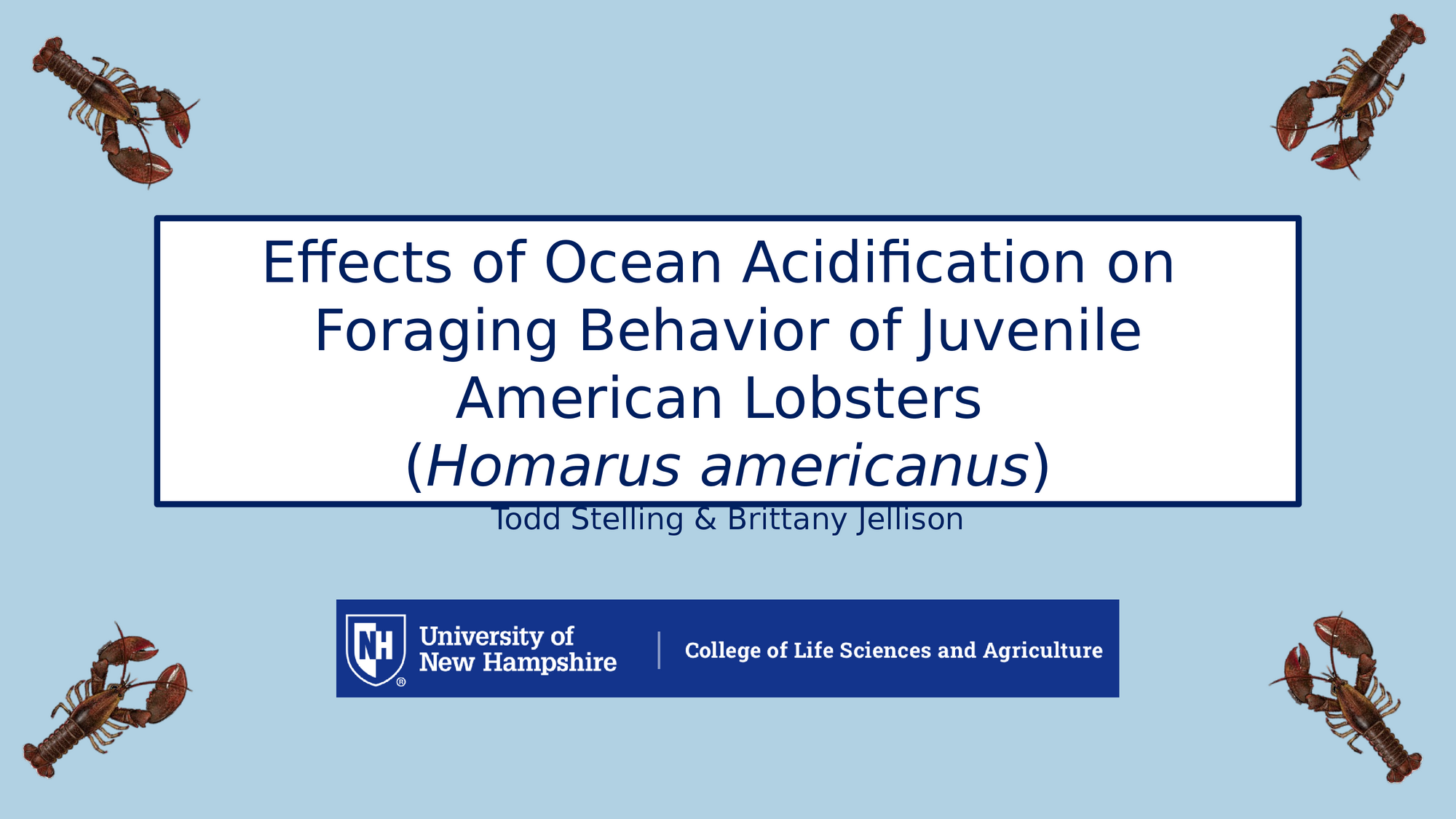Title:
Effects of Ocean Acidification on Foraging Behavior of Juvenile American Lobsters
Slideshow Presentation
Best viewed by downloading
Preview Converted Images may contain errors

Abstract
Ocean acidification has a variety of physiological and behavioral effects on marine invertebrates, like the American lobster. Most studies focus on the physiological and developmental effects of OA on larval American lobsters. In other crustaceans, behavioral effects of OA have been observed in juvenile stages, indicating there could be a similar effect on juvenile American lobsters. In this study, juveniles (N = 30) were exposed to a pH range, from 7.3 to 7.8, for ten days. The time it took the lobsters to locate their prey (mussels), the number of foraging trips taken, and the time spent at the foraging rock were investigated. The presence of prey had a significant effect on all three metrics: when prey was present, the lobsters located the foraging rock faster, spent more time at the foraging rock, and took more foraging trips. Regardless of prey presence or absence, there was no significant effect of pH on the three behavioral metrics. This indicates that locomotion and movement patterns were not altered by exposure, and that low-pH lobsters were able to find their prey just as quickly as control lobsters. Juvenile American lobsters are extremely resilient. Living in a dynamic, intertidal environment gives them an impressive ability to regulate themselves when their environment changes drastically, including changes in pH. More research is needed to tie these results to possible physiological mechanisms that explain how low-pH lobsters were able to overcome sustained pH exposure to quickly locate prey.
Authors
| First Name |
Last Name |
|
Brittany
|
Jellison
|
|
Todd
|
Stelling
|
Leave a comment
Submission Details
Conference GRC
Event Graduate Research Conference
Department Marine Biology (GRC)
Group Oral Presentation
Added April 12, 2024, 5:03 p.m.
Updated April 12, 2024, 5:04 p.m.
See More Department Presentations Here